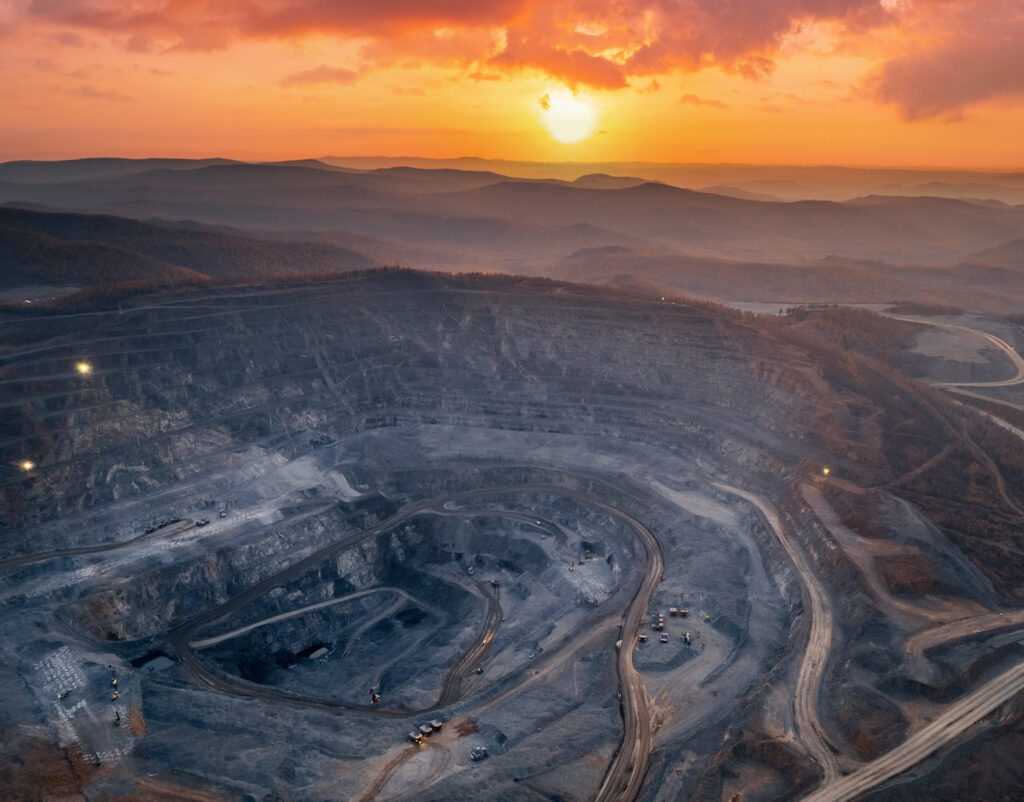When we think about the modern world—its towering skyscrapers, advanced technologies, and sprawling cities—it’s easy to forget the industries that provide the raw materials behind it all. Mining and quarrying, some of humanity’s oldest economic activities, remain as vital today as they were in ancient times. From extracting precious metals and minerals to supplying the stone and aggregates that build our roads and homes, these industries are the backbone of infrastructure, manufacturing, and technological innovation.
This blog explores the importance of mining and quarrying, their economic role, environmental challenges, innovations, and what the future holds for these age-old yet ever-evolving sectors.
What Are Mining & Quarrying?
Though often used together, mining and quarrying are distinct activities:
- Mining: The process of extracting valuable minerals or fuels from beneath the Earth’s surface. Examples include gold, coal, copper, iron ore, and lithium. Mining operations can be underground (tunnels and shafts) or surface-based (open-pit mines).
- Quarrying: The extraction of building materials like stone, gravel, sand, and limestone, usually from shallow, surface-level deposits. Quarries supply materials for construction, cement production, and decorative stonework.
Together, these industries provide both the raw materials for modern technology and the essential resources for physical infrastructure.
Historical Significance
Mining and quarrying date back thousands of years:
- Ancient Egypt: Quarried limestone and granite built the pyramids.
- Roman Empire: Gold and silver mines fueled imperial expansion.
- Medieval Europe: Iron and coal mines supported black smithing and trade.
The Industrial Revolution was a turning point, with coal and iron mining powering steam engines, railways, and factories. Quarrying also expanded as urbanization demanded stone and cement for roads and buildings.
Today, the focus has shifted toward new resources—like lithium and rare earth minerals—that are essential for clean energy and high-tech devices.
Economic Importance
Mining and quarrying are multi-trillion-dollar industries with enormous global influence:
• Employment: Millions work directly in mines and quarries, while countless others are employed in supply chains, logistics, and equipment manufacturing.
• GDP Contribution: Resource-rich countries like Australia, Chile, and South Africa depend heavily on mining exports.
• Infrastructure Development: Quarrying provides the materials for roads, bridges, buildings, and dams.
• Global Trade: Metals and minerals are among the world’s most traded commodities, shaping international economics.
For many nations, natural resources represent both economic opportunity and strategic power.
Key Resources Extracted
From Mining:
- Metals: Gold, silver, copper, iron ore, aluminum, zinc, nickel.
- Fuels: Coal, uranium, oil shale (linked to energy industries).
- Critical minerals: Lithium, cobalt, and rare earth elements essential for electric vehicles, batteries, and renewable energy.
From Quarrying:
- Construction aggregates: Sand, gravel, crushed stone.
- Building stones: Marble, granite, slate, and limestone.
- Industrial minerals: Clay, gypsum, chalk—used in cement, ceramics, and glass.
Without these resources, modern cities, industries, and technologies simply could not exist.

Environmental & Social Challenges
- Land Degradation: Large open pits and quarries can scar landscapes permanently.
- Pollution: Mining can contaminate soil and water with heavy metals and chemicals.
- Carbon Emissions: Fossil fuel mining contributes heavily to climate change.
- Biodiversity Loss: Habitats are destroyed, displacing wildlife.
- Community Impact: Local populations may face displacement, unsafe working conditions, and health hazards.
Balancing these negative impacts with economic benefits is one of the industry’s greatest challenges.
Innovations Driving Change ⚙️
Despite challenges, mining and quarrying are evolving through technological advancements:
1. Automation & Robotics: Self-driving trucks, automated drills, and robotic miners improve efficiency and reduce human risk.
2. Drones & Satellites: Used for surveying sites, monitoring safety, and minimizing environmental impact.
3. AI & Big Data: Enhance exploration accuracy and optimize operations.
4. Digital Twins: Virtual models of mines to simulate performance and predict issues.
5. Sustainable Practices: Dust control systems, water recycling, and energy-efficient machinery reduce environmental damage.
These innovations not only boost productivity but also help address environmental and safety concerns.
Global Hotspots
Some regions dominate global mining and quarrying:
- Australia: Iron ore, coal, and gold.
- China: Leading producer of rare earth minerals and industrial stone.
- South Africa: Famous for gold, diamonds, and platinum.
- Chile & Peru: Major global suppliers of copper.
- India: Significant producer of granite, limestone, and iron ore.
Each nation’s resources influence both local economies and global markets.
Toward Sustainability
The industry is under increasing pressure to become more sustainable:
- Rehabilitation & Reclamation: Restoring mined land into green spaces, farms, or lakes.
- Water & Waste Management: Treating wastewater and managing toxic mining by-products.
- Green Mining: Using renewable energy and eco-friendly technologies for extraction.
- Ethical Sourcing: Programs ensuring minerals are not linked to conflict or exploitation.
- Circular Economy: Recycling metals and reducing dependence on virgin resources.
The shift toward sustainability is not just a moral imperative—it’s also a business necessity as investors and consumers demand responsible practices.
Future of Mining & Quarrying
The sector is entering a new era shaped by technology, sustainability, and global demand:
- Urban Mining: Extracting valuable metals from electronic waste instead of the ground.
- Cleaner Energy Transition: Rising demand for lithium, cobalt, and rare earths to support renewable energy and electric vehicles.
- Carbon-Neutral Operations: Mining powered by solar, wind, and hydrogen.
- Blockchain for Transparency: Tracking minerals from mine to market to ensure ethical sourcing.
- Community-Centric Models: Greater focus on corporate social responsibility (CSR) to support local populations.
Mining and quarrying will remain central to global progress but must adapt to survive in a greener, more ethical economy.
Conclusion
Mining and quarrying may be industries rooted in the past, but they are also key to the future. They provide the raw materials that build our homes, fuel our economies, and enable technologies from smartphones to renewable energy systems.
At the same time, the sector faces pressing challenges—environmental degradation, carbon emissions, and community impacts—that demand sustainable solutions. With the rise of automation, digitalization, and green practices, mining and quarrying are evolving into smarter, cleaner, and more responsible industries.
Ultimately, these industries are not just about extracting materials—they’re about enabling civilization itself. As we move toward a future defined by sustainability and innovation, mining and quarrying will continue to dig deep, not only into the Earth but also into the possibilities of human progress.











